
Common Sense Is All You Need is a 1947 detective novel by the British author Alfred Walter Stewart, published under his pseudonym J.J. Connington. It was his last novel, published by Hodder and Stoughton the year of his death, and featured his regular character Sir Clinton Driffield. It was the seventeenth in a series of novels featuring Driffield, a Chief Constable of a rural English county, published during the Golden Age of Detective Fiction. Although published during the postwar era. it is set during the Second World War with German bombing raids taking place.

For Murder Will Speak is a 1938 detective novel by the British author Alfred Walter Stewart, published under his pseudonym J.J. Connington. It is the thirteenth in a series of novels featuring the Golden Age Detective Chief Constable Sir Clinton Driffield. The title references a line from Shakespeare's Hamlet. It was released in the United States by Little, Brown and Company under the alternative title Murder Will Speak.

Mystery at Lynden Sands is a 1928 detective novel by the British author Alfred Walter Stewart, published under his pseudonym J.J. Connington. It is the third in a series of novels featuring the Golden Age Detective Chief Constable Sir Clinton Driffield. It was published in London by Gollancz and Boston by Little, Brown and Company. It received a generally positive critical reception, with one reviewer going so far as to say it "may just fail of being the best detective story of the century" comparing it to The Cask and The Mysterious Affair at Styles. In A Catalogue of Crime by Jacques Barzun and Wendell Hertig Taylor describe it as "early but not first-class Connington".

Tragedy at Ravensthorpe is a 1927 detective novel by the British writer Alfred Walter Stewart, published under his pseudonym J.J. Connington. It is the second in a series of seventeen novels featuring the Golden Age Detective Chief Constable Sir Clinton Driffield following on from Murder in the Maze. The American edition was published in Boston by Little, Brown and Company.
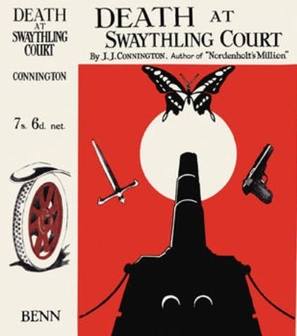
Death at Swaythling Court is a 1926 mystery detective novel by the British writer Alfred Walter Stewart, published under his pseudonym J.J. Connington. It was Stewart's first attempt at a detective novel, having previously produced works including the 1923 science fiction novel Nordenholt's Million. It is a stand-alone novel, revolving around a country house mystery. The following year the author published Murder in the Maze, the first of seventeen novels featuring the Golden Age detective Sir Clinton Driffield, for which he is best-known.
The Boathouse Riddle is a 1931 detective novel by the British author Alfred Walter Stewart, published under his pseudonym J.J. Connington. It is the sixth in his series of seventeen novels featuring the Golden Age Detective Chief Constable Sir Clinton Driffield. The title is also written as The Boat-House Riddle.
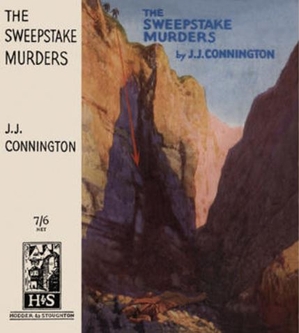
The Sweepstake Murders is a 1931 detective novel by the British author Alfred Walter Stewart, published under his pseudonym J.J. Connington. It is the seventh in his series of novels featuring the Golden Age Detective Chief Constable Sir Clinton Driffield. It uses a tontine murder theme, which recurs in detective and mystery stories.
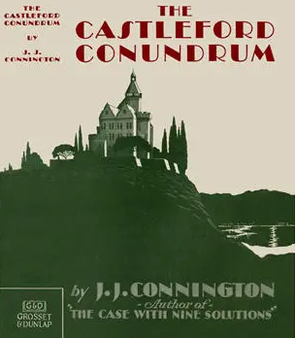
The Castleford Conundrum is a 1932 detective novel by the British author Alfred Walter Stewart, published under his pseudonym J.J. Connington. It is the eighth in his series of novels featuring the Golden Age Detective Chief Constable Sir Clinton Driffield, the Chief Constable of a rural English county. It makes passing reference to one of the earlier stories Mystery at Lynden Sands.
Sir Clinton Driffield is a fictional police detective created by the British author J.J. Connington. He was one of numerous detectives created during the Golden Age of Detective Fiction, making his first appearance in Murder in the Maze in 1927. He appeared in four subsequent novels by 1929 when Connington apparently wished to write him out following Nemesis at Raynham Parva. However, his replacement Superintendent Ross failed to gain the same level of popularity over two novels and Sir Clinton returned in the 1931 mystery The Boathouse Riddle. He went on to appear in a further eleven novels. The last entry Common Sense Is All You Need was published the year of Connington's death in 1947 and is set in wartime Britain.

A Minor Operation is a 1937 British detective novel by the British author Alfred Walter Stewart, published under his pseudonym J.J. Connington. It is the eleventh in a series of novels featuring the Golden Age Detective Chief Constable Sir Clinton Driffield and was published by Hodder and Stoughton in London and Little, Brown and Company in the United States. In a New York Times review Isaac Anderson noted Sir Clinton as being rare among Chief Constables in British mystery stories for his competence noting "If you have not previously met him in Mr. Connington’s other novels, this is a good time to make his acquaintance, for in this book you will see him at his best".
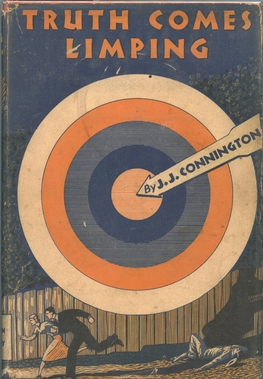
Truth Comes Limping is a 1938 mystery detective novel by the British author Alfred Walter Stewart, published under his pseudonym J.J. Connington. It is the twelfth in a series of seventeen novels featuring the Golden Age Detective Sir Clinton Driffield, the Chief Constable of a rural English county. It was published by Hodder and Stoughton in London and Little, Brown and Company in the United States.
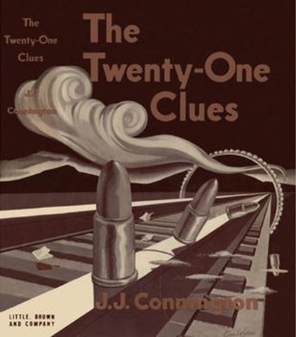
The Twenty-One Clues is a 1941 detective novel by the British author Alfred Walter Stewart, published under his pseudonym J.J. Connington. It is the fourteenth in a series of seventeen novels featuring the Golden Age Detective Sir Clinton Driffield, the Chief Constable of a rural English county. It was published by Hodder and Stoughton in London and Little, Brown and Company in the United States.

The Ha-Ha Case is a 1934 detective novel by the British author Alfred Walter Stewart, published under his pseudonym J.J. Connington. It is the ninth in his series of novels featuring the Golden Age Detective Chief Constable Sir Clinton Driffield, the Chief Constable of a rural English county. A traditional country house mystery, the title refers to a Ha-ha a sunken fence hidden to the naked eye common on country estates. Unlike the other novels in the series which are set when they are written, this is dated a decade before its publication in 1924. In a review in the Sunday Times Dorothy L. Sayers wrote "There is no need to say that Mr. Connington has given us a sound and interesting plot, very carefully and ingeniously worked out."
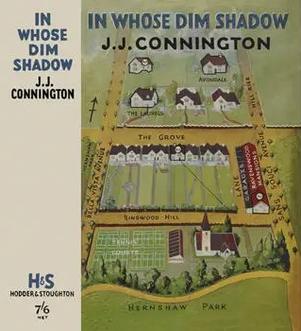
In Whose Dim Shadow is a 1935 detective novel written by the British author Alfred Walter Stewart, published under his pseudonym J.J. Connington. It is the tenth in his series of novels featuring the Golden Age Detective Chief Constable Sir Clinton Driffield, the Chief Constable of a rural English county. The title comes from a line in The Battle of Lake Regillus in Thomas Babington Macaulay's Lays of Ancient Rome. It was published in the United States by Little, Brown under the alternative title The Tau Cross Mystery.

Jack-in-the-Box is a 1944 detective novel by the British author Alfred Walter Stewart, published under his pseudonym J.J. Connington. It is the sixteenth in his series of novels featuring the Golden Age Detective Sir Clinton Driffield, the Chief Constable of a rural English county. It was published by Hodder and Stoughton in London and Little, Brown and Company in the United States. Writing in The New York Times Isaac Anderson felt that "to appreciate this story fully one should either be well grounded in science or take Sir Clinton’s explanations on trust".

No Past Is Dead is a 1942 mystery detective novel by the British author Alfred Walter Stewart, published under his pseudonym J.J. Connington. It is the fifteenth in his series of novels featuring the Golden Age Detective Sir Clinton Driffield, the Chief Constable of a rural English county. It was published by Hodder and Stoughton in London and Little, Brown and Company in the United States.

The Counsellor is a 1939 detective novel by the British author Alfred Walter Stewart, published under his pseudonym J.J. Connington. It was published in London by Hodder and Stoughton and in the United States by Little, Brown and Company. It was the first of two novels in which Connington replaced his usual detective Sir Clinton Driffield with radio personality Max Brand. It was followed the next year by The Four Defences before Connington returned to writing Driffield novels.

The Four Defences is a 1940 detective novel by the British author J.J. Connington, the pen name of the chemist Alfred Walter Stewart. It was published in London by Hodder and Stoughton and in the United States by Little, Brown and Company. It is a sequel to the 1939 novel The Counsellor featuring radio personality Mark Brand in a brief hiatus for Connington's best-known series detective Chief Constable Sir Clinton Driffield. It was inspired by the real-life Alfred Rouse case of 1930. Written and set just before the outbreak of the Second World War, it was released in wartime.

The Dangerfield Talisman is a 1926 mystery detective novel by the British writer Alfred Walter Stewart, published under his pen name J.J. Connington. It was his second entry into the genre following his debut Death at Swaythling Court. Notably the plot revolves around the disappearance of a family heirloom rather than a murder. The following year he wrote Murder in the Maze the first in a series of novels featuring Sir Clinton Driffield, one of the Golden Age Detectives.

The Case with Nine Solutions is a 1928 detective novel by the British writer Alfred Walter Stewart, published under his pseudonym J.J. Connington. It is the forth in his series of novels featuring the Golden Age Detective Chief Constable Sir Clinton Driffield. It was published in London by Gollancz and the following year in Boston by Little, Brown and Company.


















